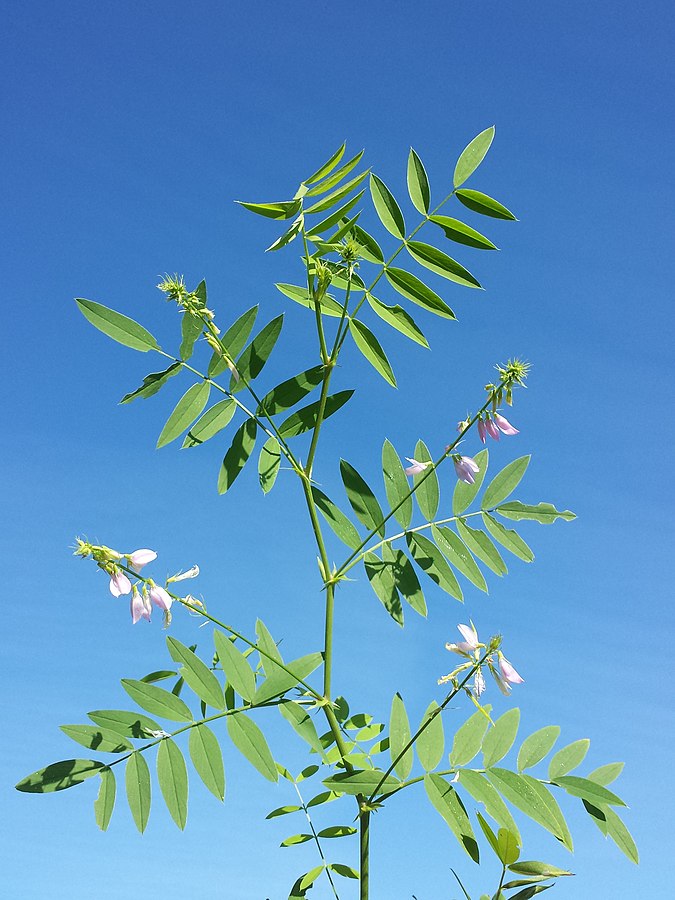Goatsrue

Goatsrue
(Galega officinalis)
Priority: - Prevent / EDRR
Tags: Agricultural | Terrestrial
Identification and Reproduction
Identification:
- Goatsrue is a fast growing shrubby perennial plant that can reach up to 1.5 m tall.
- It appears shrub-like as it is multi-stemmed.
- Leaves are pinnately compound and alternate.
- Flowers range from white to lavender, pea-like and clustered in a terminal cluster. Flowers bloom from June to July. With maturity seedpods will develop.
Reproduction:
- Reproduces by seeds that are easily dispersed.
- Seeds can remain viable for over 15 years.
Habitat & Ecology
- This plant is well adapted to a variety of soil types; sandy, loamy to clay soils.
- It is also able to thrive in nutrient poor sites.
- Goatsrue prefers moist areas that receive full sun.
- Commonly found on fields, pastures, rangelands, grasslands, riverbanks, roadsides and other disturbed sites.
Impacts
Social:
- It can contaminate alfalfa.
- Contains an alkaloid that may be toxic to some livestock.
- Forms dense thickets that reduce yield value and forage potential for livestock.
Ecological:
- Out-competes natives species and decreases biodiversity.
Management
Prevention is a high priority for this plant.
- Do not plant goatsrue.
- Monitor site for goatsrue in pastures and disturbed areas.
- Clean clothing, animals, tools and vehicles prior to leaving an infested site.
- Contact the Canadian Food Inspection Agency (CFIA) if you think you have seen this plant
Resources
For more information on seed identification please check out the Canadian Food Inspection Agency's Weed See for Galega officinalis (Goat's rue).
View header photo here.




